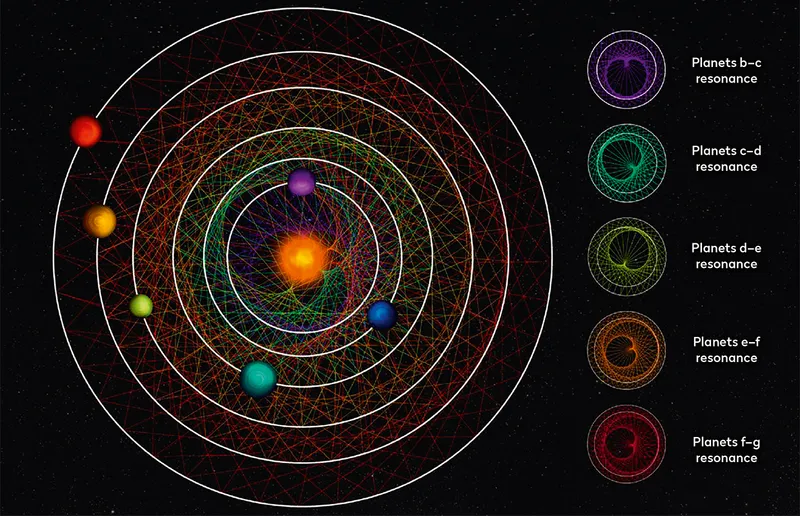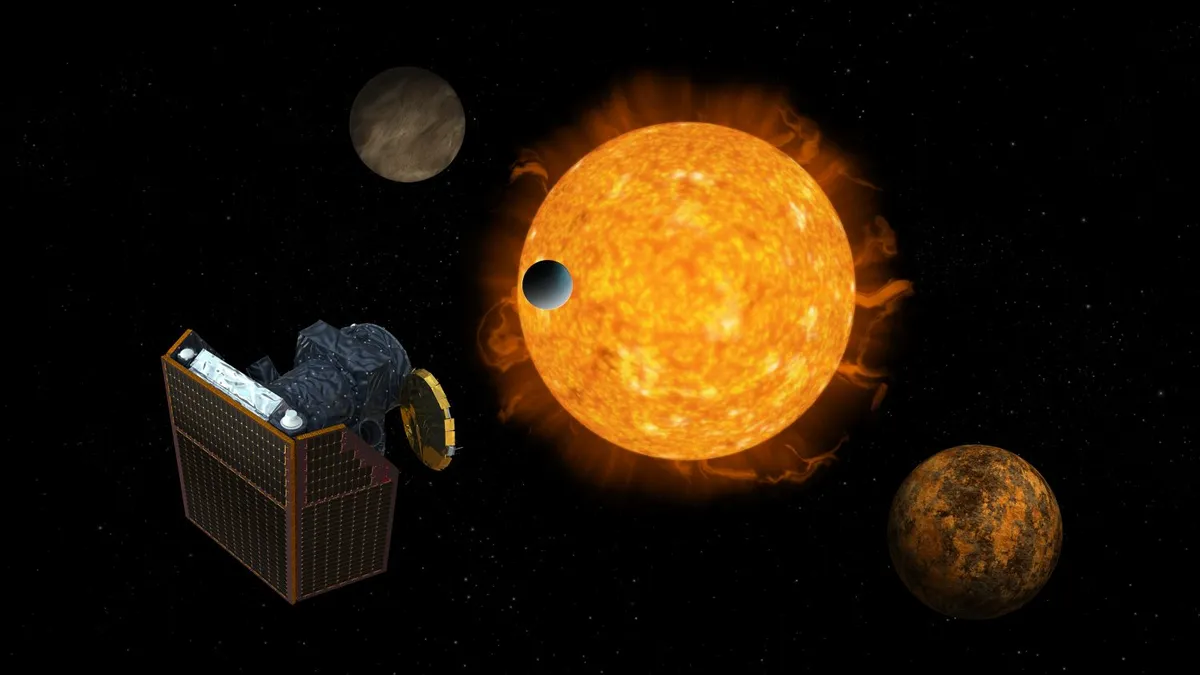A rare system of six planets, all kept perfectly in balance, has been found around a star just 100 lightyears away.
The star, HD110067, is so near to us that it’s the brightest-known system with four or more planets, making it an ideal candidate for further study.
The system was first uncovered in 2020 by the Transiting Exoplanet Survey Satellite (TESS), which initially found just two exoplanets.
A second set of observations hinted there were actually four, but their orbits proved difficult to pin down.
Intrigued by the unusual system, a team of astronomers used ESA’s Characterising Exoplanet Satellite (CHEOPS) to study the star, eventually confirming the presence of three planets.

HD110067 and exoplanet orbital resonance
Unusually, the planets around star HD110067 are in what’s known as an orbital resonance.
The closest planet to the star takes 9.11 days to orbit, the next out takes 13.67 days – around 1.5 times that of the inner planet.
The furthest planet from the star orbits in 20.52 days, again 1.5 times the orbital time of the middle planet.
"By establishing this pattern of planet orbits, we were able to predict other orbits of planets we hadn’t yet detected," says Thomas Wilson from the University of Warwick, who took part in the study.
"From this we lined up previously unexplained dips in starlight observed by CHEOPS and discovered three additional planets with longer orbits."
Most planets form in resonances with the others in their system, but this is easily thrown out of balance, such as by the presence of a large planet, an encounter with another star or a big impact.

"We think only about 1% of all systems stay in resonance," says Rafael Luque, also from the University of Warwick.
"[HD110067] shows us the pristine configuration of a planetary system that has survived untouched."
All of the planets around HD110067 are thought to have sub-Neptune masses, making them a class of planet not seen within our own Solar System.
"All of these planets have large atmospheres – similar to Uranus or Neptune – which makes them perfect for observation with JWST," says Wilson.
"It would be fascinating to test if these planets are rocky like Earth or Venus but with larger atmospheres – solid surfaces potentially with water."

